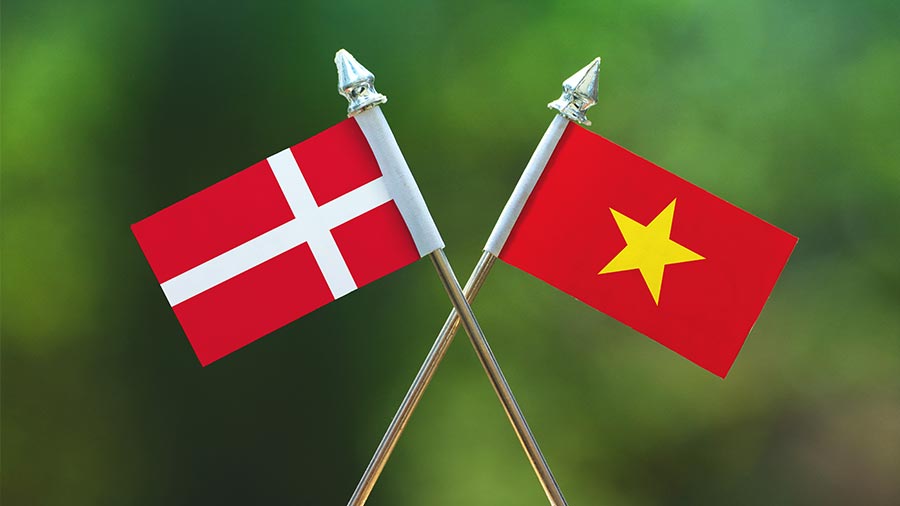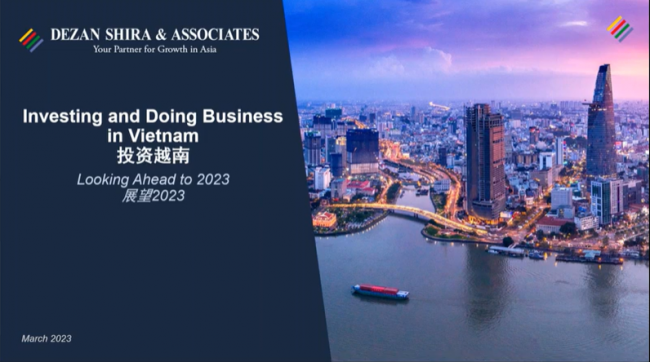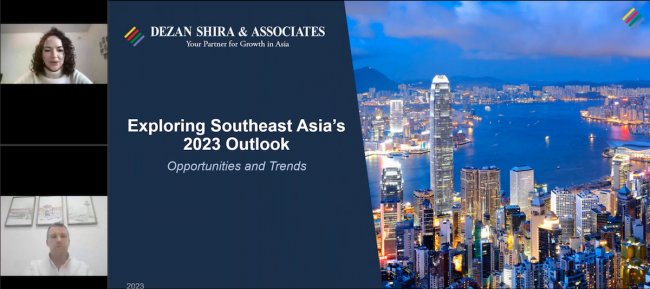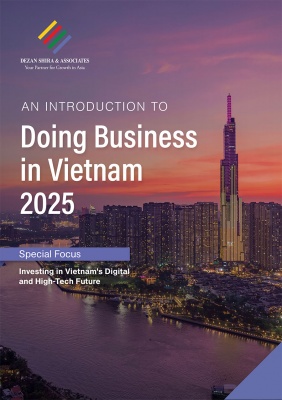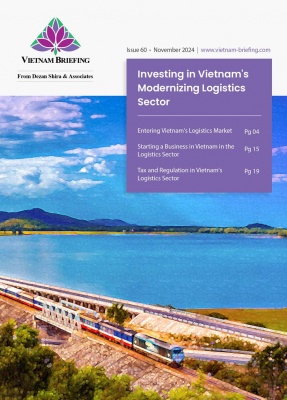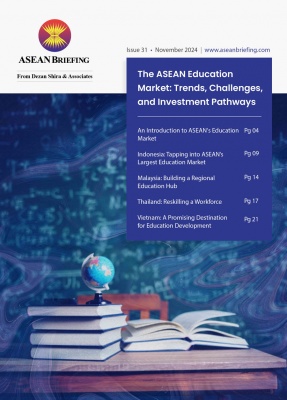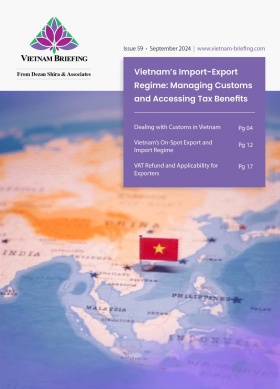Vietnam’s Tourism Boom During Tet 2025: Leading Destinations and Insights
We look at the numbers behind Vietnam’s tourism sector boom during the Tet 2025 holidays. As of February 2, 2025, the Vietnam National Authority of Tourism (NAT) reported that eight localities nationwide generated over VND 1 trillion (approx. US$39.5 billion) in tourism revenue during the Lunar New Year holidays, reflecting a substantial year-on-year increase. This growth was largely driven by a 30 percent rise in foreign visitors, supported by favorable visa policies and targeted marketing initiatives.
Vietnam’s tourist numbers surged during the 2025 Tet holidays
According to the Vietnamese government’s official calendar, the 2025 Tet holidays commenced on January 25 and concluded on February 3. While Tet is a significant cultural tradition for Vietnamese citizens, it also presents a key opportunity for the tourism sector, as demand for travel and recreational activities typically rises during this extended holiday period.
Preliminary data from the National Authority of Tourism (NAT) and local tourism departments indicate that Vietnam welcomed an estimated 12.5 million domestic travelers during Tet, reflecting a 19 percent year-on-year increase. Additionally, the number of foreign visitors rose by approximately 30 percent, driven by revised visa policies, market restructuring, and targeted promotional initiatives by local authorities and businesses.
Vietnam’s leading localities in tourism revenue during Tet
Vietnam’s tourism sector demonstrated significant growth in both visitor numbers and revenue during this year’s holiday season, with eight provinces and cities surpassing VND 1 trillion in earnings. This marks a notable expansion compared to 2024, when only Ho Chi Minh City (HCMC), Hanoi, and Da Nang reached this milestone.
|
Eight Localities with Highest Tourism Revenue During the 2025 Tet Holidays |
||
|
Cities/provinces |
VND billion |
US$ million |
|
HCMC |
7,690 |
303.65 |
|
Hanoi |
3,530 |
139.39 |
|
Quang Ninh |
2,665 |
105.23 |
|
Da Nang |
1,887 |
74.51 |
|
Kien Giang |
1,886 |
74.47 |
|
Khanh Hoa |
1,357 |
53.58 |
|
Lao Cai |
1,342 |
52.99 |
|
Ninh Binh |
1,000 |
39.49 |
|
Source: VnExpress.net |
||
Insights by region
Vietnam’s tourism sector continues to experience strong momentum, driven by favorable visa policies, enhanced tourism infrastructure, and targeted marketing efforts by local authorities and businesses.
The NAT has highlighted the impressive performance of Vietnam’s leading tourism destinations during this year’s Tet holiday, with several provinces and cities experiencing significant increases in both visitor numbers and revenue.
- Ho Chi Minh City and Hanoi
HCMC led the country in tourism revenue, generating an estimated US$303 million, marking a 17 percent increase compared to the same period in 2024. This figure was more than double that of Hanoi, which ranked second with US$139 million, reflecting a nearly 8 percent year-on-year growth.
- Quang Ninh
Home to the renowned Ha Long Bay, Quang Ninh saw a substantial increase in tourism revenue, reaching US$105 million, a 71 percent surge from the previous year. Although visitor numbers grew by 21 percent, totaling 969,000, the sharp revenue increase was driven by higher visitor spending.
- Da Nang
Da Nang recorded US$75 million in tourism revenue, representing a 19 percent rise compared to 2024. This growth was fueled by both domestic and international tourism, with domestic flights increasing by 70 percent and international flights by 45 percent during the Tet period.
- Kien Giang
The 2025 Tet holidays proved highly successful for Kien Giang’s tourism sector, with Phu Quoc contributing nearly 70 percent of the province’s visitors and revenue. Kien Giang’s total tourism revenue reached US$75 million, marking a 50 percent year-on-year increase. Phu Quoc, in particular, attracted a high number of international visitors, who significantly contributed to accommodation and other tourism-related expenditures.
- Khanh Hoa
Tourism revenue in Khanh Hoa totaled US$54 million, reflecting a 41 percent year-on-year increase. Between January 27 and February 1, the province welcomed 940,500 visitors, with demand concentrated in urban centers. The surge in arrivals boosted the average room occupancy rate to 82 percent, with five-star resorts in the Northern Cam Ranh Peninsula exceeding 90 percent occupancy.
- Lao Cai
Fueled by the popularity of Sa Pa, Lao Cai generated approximately US$53 million in revenue, including VND 126 billion (US$4.98 million) from international visitors and VND 1,215 billion (US$48 million) from domestic travelers. This represented a 49 percent increase compared to the same period in 2024. Other key tourist destinations in Lao Cai during Tet included Lao Cai City, Bac Ha, Bat Xat, and Bao Yen District.
- Ninh Binh
Ninh Binh recorded preliminary tourism revenue of US$39 million, a 20 percent year-on-year increase. The province’s average room occupancy rate ranged from 80 to 85 percent, with major attractions such as Hoa Lu Ancient Capital, Bai Dinh Pagoda, Trang An Eco-tourism Area, Tam Coc, and Mua Cave drawing large numbers of visitors.
- Other notable destinations
Beyond the provinces exceeding VND 1 trillion in tourism revenue, several other destinations also saw strong growth during Tet:
- Thanh Hoa welcomed 675,000 visitors, an increase of 9.7 percent, with total revenue reaching VND 570 billion (US$22.52 million), up 12.6 percent year-on-year.
- Ba Ria-Vung Tau recorded 773,000 visitors, a 27 percent rise, with tourism revenue reaching VND 747 billion (US$29.51 million), reflecting a 34 percent increase.
Key factors influencing Vietnam’s tourism during the 2025 Tet holidays
According to the NAT, multiple factors contributed to Vietnam’s tourism performance during the 2025 Tet holiday.
The early announcement of the 9-day holiday, coupled with favorable weather conditions across most regions, significantly boosted travel demand compared to the same period in 2024. Additionally, an expanded range of outdoor tourism activities enhanced the holiday experience, creating a vibrant and engaging atmosphere for both domestic and international visitors.
However, rising transportation costs posed a challenge to the sector’s growth. Airfares increased by 10–15 percent year-on-year, limiting accessibility for some travelers. Additionally, an increasing number of Vietnamese tourists opted for international destinations such as Thailand, Malaysia, Singapore, Japan, and South Korea over domestic travel. Economic constraints also impacted domestic tourism spending, as financial pressures led to more cautious consumer behavior.
Chinese visitors to Vietnam during Tet grew by 35 percent
According to data from the marketing agency China Trading Desk, the number of Chinese visitors booking flights to Vietnam during the Lunar New Year holiday rose by nearly 35 percent compared to last year and by 70 percent compared to pre-Covid levels in 2019. Many Asian destinations have experienced an increase in Chinese tourists during this holiday. Vietnam welcomed 17.58 million foreign tourists in 2024, representing a 39.5 percent year-on-year increase and reaching 97.6 percent of pre-Covid levels. China remained Vietnam’s second-largest inbound tourism market, with 3.73 million arrivals.
Case study: Phu Quoc island’s tourism boom during the 2025 Tet holidays
Experts have emphasized the critical role of targeted policies and promotional efforts in driving Vietnam’s tourism growth during the 2025 Tet holiday. Phu Quoc Island, in particular, experienced a record surge in international arrivals, solidifying its status as a premier destination for foreign travelers seeking a Tet getaway.
During the holiday period, 75 percent of visitors to Phu Quoc were international tourists, with the island handling an unprecedented 40 international flights per day. According to Truong Cong Tam, President of the Phu Quoc Professional Tour Guide Association, this was the highest number of international flights recorded since Phu Quoc’s international routes were established.
On January 25, the first day of Tet, Phu Quoc received 38 international flights, accounting for 70 percent of all arrivals. By January 27, this number had increased to 40 daily flights, primarily from Taiwan and South Korea, with additional arrivals from Malaysia, Thailand, and Singapore. For comparison, in December 2024, Phu Quoc recorded a maximum of 30 international flights per day. This surge in arrivals boosted local tourism revenue to over VND 152 billion (US$6 million) on January 25, according to the Kien Giang Department of Tourism.
Simultaneously, accommodation demand soared. Mustgo reported a 90 percent occupancy rate across Phu Quoc’s hotels, with the majority of bookings concentrated in four-star and five-star establishments. The platform attributed the island’s growing international appeal to enhanced infrastructure, new attractions such as live performances and night markets, and favorable visa policies. Notably, Phu Quoc uniquely offers a 30-day visa exemption for all international visitors, further facilitating the surge in foreign arrivals during Tet.
About Us
Vietnam Briefing is published by Asia Briefing, a subsidiary of Dezan Shira & Associates. We produce material for foreign investors throughout Asia, including ASEAN, China, and India. For editorial matters, contact us here and for a complimentary subscription to our products, please click here. For assistance with investments into Vietnam, please contact us at vietnam@dezshira.com or visit us at www.dezshira.com.
Dezan Shira & Associates assists foreign investors throughout Asia from offices across the world, including in Hanoi, Ho Chi Minh City, and Da Nang. We also maintain offices or have alliance partners assisting foreign investors in China, Hong Kong SAR, Dubai (UAE), Indonesia, Singapore, Philippines, Malaysia, Thailand, Bangladesh, Italy, Germany, the United States, and Australia.
- Previous Article Vietnam’s AI Sector in 2025: Regulatory Frameworks and Opportunities for Investors
- Next Article Vietnam’s Carbon Market Development: Objectives and Implementation Plan Under Decision 232
